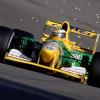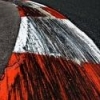Race circuit designers
#1

Posted 17 November 2009 - 18:47
Bahrain International Circuit (Manama, Bahrain): Hermann Tilke (GER)
Albert Park Grand Prix Circuit (Melbourne, Australien):
Sepang International Circuit (Sepang, Malaysia): Hermann Tilke (GER)
Shanghai International Circuit (Shanghai, China): Herman Tilke (GER)
Circuit de Catalunya (Barcelona, Spanien):
Circuit de Monaco (Monte Carlo, Monaco):
Istanbul Park (Istanbul, Türkei): Hermann Tilke (GER)
Circuit Gilles Villeneuve (Montreal, Kanada):
Valencia Street Circuit (Valencia, Spanien): Hermann Tilke (GER)
Silverstone Circuit (Silverstone, Großbritannien): Royal Automobile Club (GBR)
Hockenheimring (Hockenheim, Deutschland): John Hugenholtz (NED)/Herman Tilke (2002
Hungaroring (Budapest, Ungarn):
Circuit de Spa-Francorchamps (Spa, Belgien): Jules de Their (BEL), Henri Langlois Van Ophem (BEL)
Autodromo Nationale Monza (Monza, Italien): Milan Automobile Club (ITA)
Marina Bay Street Circuit: (Singapur): Hermann Tilke (GER)
Suzuka Circuit (Suzuka, Japan): John Hugenholtz (NED)
Korean International Circuit (Yeongam, Korea): Hermann Tilke (GER)
Yas Marinas Circuit (Abu Dhabi): Hermann Tilke (GER)
Autórdromo José Carlos Pace (Interlagos, Brasilien):
Can you help me?
Advertisement
#2

Posted 17 November 2009 - 19:06
Anthony Noghes goes down in history as the "organiser" of the initial races at Monaco, and also as designer of the circuit. Top manI only know two race track designers (okay, there is Clive Bowen from Apex), Hermann Tilke and John Hugenholtz. But who designed the other F1 tracks?`
Circuit de Monaco (Monte Carlo, Monaco):
Can you help me?
Rob
#3

Posted 17 November 2009 - 19:11
#4

Posted 17 November 2009 - 19:39
#5

Posted 17 November 2009 - 21:20
#6

Posted 17 November 2009 - 21:35
"For days on end I went over the avenues of the Principality until I hit on the only possible circuit".
#7

Posted 17 November 2009 - 21:57
. Likewise the Circuit Gilles Villeneuve was delveloped from the roads around the Olympic village and rowing course.
I thought the roads on the Isle de Notre Dame were left over from Expo 67 rather than the 1976 Olympics ?
#8

Posted 17 November 2009 - 21:58
#9

Posted 17 November 2009 - 22:05
Spa was originally a road circuit so the most that Jules de Their (BEL) and Henri Langlois Van Ophem can claim credit for the link from Les Combes to Blanchimont to form the new circuit and possibly for realigning Eau Rouge.
Interlagos was originally constructed in 1940. The land it is built on was originally earmarked for housing until it was found to be unsuitable and a race circuit complex was built insrtead. It is conceivable that the roads forming the circuit may have been originally planned to serve the housing development. Either way, someone must have designed it.
Both Catalunya and the Hungaroring are artificial circuits so someone must have designed these two.
#10

Posted 17 November 2009 - 22:19
#11

Posted 17 November 2009 - 22:43
The Hockenheimring, for instance... it's been there for many years and then it's been modified. With modifications that span generations, so no one person could be said to be the designer, nor one team of designers.
Albert Park was a natural circuit that just fitted in with the roads through the park. Until 1960, at least. Then someone modified things to slow it down dramatically, to introduce some more interesting corners and make room for pit buildings etc.
You can be sure (I know it to be true anyway...) that people were rocketing around Albert Park as it was used in the fifites well before WW2. And in racing cars, what's more.
And the lake was used for powerboat races as well...
#12

Posted 18 November 2009 - 09:41
I'm going to throw the name of Istvan Papp in the ring for this one.I only know two race track designers (okay, there is Clive Bowen from Apex), Hermann Tilke and John Hugenholtz. But who designed the other F1 tracks?`
Hungaroring (Budapest, Ungarn):
Can you help me?
While the circuit design makes for tremendous spectator possibilities, Istvan Papp's layout was slow and limited overtaking possibilities, unless your name was Senna, Mansell, or Piquet, who marvelled the Hungarians in the mid to late 80's with their speed and agressive driving.
With acknowledgement to F1 database for the above and to Grandprix.com for the following
The valley was perfect, allowing architect Istvan Papp to design a track with marvelous spectating.
Rob
#13

Posted 18 November 2009 - 11:07
I thought the roads on the Isle de Notre Dame were left over from Expo 67 rather than the 1976 Olympics ?
Your right, I'd forgotten Expo, and as we used to drive out passed some of the original buildings from that, it's an unforgivable error to make!
#14

Posted 18 November 2009 - 11:24
Craner's original (1931) Donington circuit was gravel-surfaced and used for motorcycle racing. It seems to have attracted the attention of some local car racing enthusiasts, who ran ad hoc and totally unofficial races around the estate - see Rivers Fletcher's book "Mostly Motor Racing" for example - but they were usually chucked out by Mr Shields! However, he must have decided that car racing might be a good idea anyway and the first (slightly extended) tarmac circuit opened in 1933: there were two further revisions before the war.I have nearly finished reading Tom Wheatcrofts book `Thunder in the Park` and if I have read correctly (I could be wrong!), the initial layout of Donington was `reconnoitred` by Fred Craner and his plan was taken on by the land owner of Donington Park in the early 1930`s. So there we have it, Donington was active and used as a racetrack long before the dis-used airfields form WW2 became tracks (no offence to them!) and was `designed` by Fred Craner....
#15

Posted 18 November 2009 - 11:43
#16

Posted 18 November 2009 - 12:19
I'm going to throw the name of Istvan Papp in the ring for this one.
While the circuit design makes for tremendous spectator possibilities, Istvan Papp's layout was slow and limited overtaking possibilities, unless your name was Senna, Mansell, or Piquet, who marvelled the Hungarians in the mid to late 80's with their speed and agressive driving.
With acknowledgement to F1 database for the above and to Grandprix.com for the following
The valley was perfect, allowing architect Istvan Papp to design a track with marvelous spectating.
Rob
Wasn't the original design truncated when an underground spring was discovered?
#17

Posted 18 November 2009 - 12:22
The Hungarospring, perhaps?Wasn't the original design truncated when an underground spring was discovered?
Rob
#18

Posted 18 November 2009 - 12:33
Always a problem...
#19

Posted 18 November 2009 - 12:38
Advertisement
#20

Posted 18 November 2009 - 14:14
#21

Posted 18 November 2009 - 14:21
Edward
#22

Posted 18 November 2009 - 14:55
Not unforgivable, just the years having their effect on the old gourd!Your right, I'd forgotten Expo, and as we used to drive out passed some of the original buildings from that, it's an unforgivable error to make!
But yes, it is on the grounds of the old Expo 67 World's Fair. The first few years I went, 1978-81, I seem to remember a lot of the old buildings were still up, including the tower that was the British Pavilion at the fair. Several other buildings were already crumbling wrecks. Montreal has really done a lot to remake the island since those early years.
The rowing events for the 1976 Olympics were in the basin that is alongside the main straight and pits. I don't know off hand if any other Olympic events were held on Ile Notre Dame, but I am sure that Steve and others can answer that.
Tom
#23

Posted 18 November 2009 - 16:12
- Melbourne
- Barcelona
- Montréal
- Interlagos
Who designed the tracks there?
#24

Posted 18 November 2009 - 16:30
Apparently the main grandsatnd at Barcelona was designed by Hermann Tilke... http://sketchup.goog...841878cabcc3fcdOpen are the designers from:
- Barcelona
Who designed the tracks there?
Rob
#25

Posted 18 November 2009 - 16:37
The rowing events for the 1976 Olympics were in the basin that is alongside the main straight and pits. I don't know off hand if any other Olympic events were held on Ile Notre Dame, but I am sure that Steve and others can answer that.
Tom
The huge see through globe was still there as late as 2003. I recall going over the bridge to go to the circuit, and looking down on to the island there was a stadium, quite small, but I have no idea what events it staged.
The rowing course was perfect for the teams to indulge in their own waterbourne races I recall!!
#26

Posted 18 November 2009 - 16:48
#27

Posted 18 November 2009 - 19:37
Apparently the main grandsatnd at Barcelona was designed by Hermann Tilke... http://sketchup.goog...841878cabcc3fcd
Rob
Thank you!
#29

Posted 18 November 2009 - 21:07
Originally posted by HistoryFan
Open are the designers from:
- Melbourne
- Barcelona
- Montréal
- Interlagos
Who designed the tracks there?
I've already covered the first decade of Albert Park... that is the name of the circuit that's in the Melbourne inner suburbs and is used for the Grand Prix these days...
It was a park drive, was used for decades by those with a bent for having a quick drive in a confined space, and then between 1953 and 1960 was officially used as a racing circuit (after abortive attempts in 1934 and 1937 to get permission to race there...) running in an anti-clockwise direction.
So what you are seeking is the designer of the modifications to the Albert Park circuit.
#30

Posted 18 November 2009 - 21:07
Originally posted by HistoryFan
Open are the designers from:
- Melbourne
- Barcelona
- Montréal
- Interlagos
Who designed the tracks there?
I've already covered the first decade of Albert Park... that is the name of the circuit that's in the Melbourne inner suburbs and is used for the Grand Prix these days...
It was a park drive, was used for decades by those with a bent for having a quick drive in a confined space, and then between 1953 and 1960 was officially used as a racing circuit (after abortive attempts in 1934 and 1937 to get permission to race there...) running in an anti-clockwise direction.
So what you are seeking is the designer of the modifications to the Albert Park circuit. Interlagos, of course, was another to be modified in recent years after having been established for decades.
#31

Posted 18 November 2009 - 21:13
Ta for that Vitesse2! I stood to be corrected! Mr S did indeed decide that car racing could be financially rewarding. The circuit hasn`t really changed so much over the years, so remains pretty much as it was planned out in the early 30s.Craner's original (1931) Donington circuit was gravel-surfaced and used for motorcycle racing. It seems to have attracted the attention of some local car racing enthusiasts, who ran ad hoc and totally unofficial races around the estate - see Rivers Fletcher's book "Mostly Motor Racing" for example - but they were usually chucked out by Mr Shields! However, he must have decided that car racing might be a good idea anyway and the first (slightly extended) tarmac circuit opened in 1933: there were two further revisions before the war.
#32

Posted 18 November 2009 - 21:48
That was the US Pavilion from the 67 Expo. Everything but the large globe framework was destroyed in a fire. I have not been to Montreal since the 90s, so am interested in your observation that it was still standing a half dozen years ago. I wonder if it has any use at all, or is just being kept there as some type of sculpture, after the fact as it is.The huge see through globe was still there as late as 2003. I recall going over the bridge to go to the circuit,
Tom
#33

Posted 19 November 2009 - 09:56
That was the US Pavilion from the 67 Expo. Everything but the large globe framework was destroyed in a fire. I have not been to Montreal since the 90s, so am interested in your observation that it was still standing a half dozen years ago. I wonder if it has any use at all, or is just being kept there as some type of sculpture, after the fact as it is.
Tom
You got me wondering if I dreamt it, but just found this on the Interwebnet,
"A fascinating massive geodesic dome, the structure has been preserved and repurposed into a museum dedicated to water and the environment known as the Biosphère. When initially built for the Expo, the dome symbolized American ingenuity and sophistication. It became an icon of the fair."
I also recall the Olympic village is all still along the river, and used as apartments?
#34

Posted 13 December 2009 - 12:51
but the track had some modifications in 1990

I think who came with this design was basically Francisco Rosa, but originally his design was a bit different with 4.8km so they made some modifications (like the "senna s") with the help of Ayrton Senna...
Edited by SPBHM, 13 December 2009 - 12:53.
#35

Posted 13 December 2009 - 15:27
The red line shows roughly the part that got cut-off in '65:

And a picture from a map that was released by the tyre company Continental:

I would like to know where those other 4.3km were that got cut-off in '38.
Funny that google still has the satellite picture online from before the Tilke rebuild...
Edited by Duc-Man, 13 December 2009 - 15:46.
#36

Posted 13 December 2009 - 16:16
Hockenheim from 1929, alongside the developments from it. The circuit zooms off down 'Autobahn Heidelburg', and possibly turns right at 'Schwetzingen' and joins up after the point where the Ostkurve was built. Dirt roads leading off into the forest for an indeterminate number of miles must've been pretty spooky...
And some other points that have no relation to the Hockenheimring: 1) I believe the Singapore circuit was eventually designed by the company that developed the Surfers Paradise circuit used by CART. 2) I'm pretty certain Carroll Shelby put together the F1 circuit at Dallas's Fair Park. The race was a disaster, but it was generally recognised to be the most interesting and challenging of the American city courses. 3) I'd love to see exactly how the Assen circuit was put together. All I know is that it took a lot of refinement, a lot of funny-shaped roads, and wasn't appreciated by the track's owners.
Edited by Risil, 13 December 2009 - 16:16.
#37

Posted 13 December 2009 - 17:15
#38

Posted 14 December 2009 - 11:45
The circuit zooms off down 'Autobahn Heidelburg', and possibly turns right at 'Schwetzingen' and joins up after the point where the Ostkurve was built.
Thank you for that link.
But: it was literally the other way around. Back then they drove anti-clockwise.
#39

Posted 14 December 2009 - 11:49
Thank you for that link.

But: it was literally the other way around. Back then they drove anti-clockwise.
Hmm. Also, I checked the place out on Google Maps last night, you can actually trace the gaps in the forest where the old dirt roads run/ran. Also, there's a little hotel at the village where the hairpin is, where a guest found a clogged drain in their room and forgot to report it. So they decided to put it onto Google. The wonders of the internet...
Advertisement
#40

Posted 14 December 2009 - 17:20
Talking about circuits, as a nostalgic fan of motorsport, I don't like very much those new circuits in Shangai, Bahrein or Malaysia... I much prefer the old and good ones, full of history and racing heritage, just the true capital venues of our beloved sport. I just think that even after hundred of years racing in those modern and expensive motorsport architecture creations, they will never have the special atmosphere of Monza, Spa, Silverstone, Zolder, Nurburgring, etc.
And by the way, I hate the shortened versions of Nurburgring and Hockenheim, to give some examples. Maybe I could be a bit square minded to deny all those inventions in the name of " improving safety" but I would like to ask some current drivers what they really think about others deciding they can't drive in the old and more fast ones.
Does the FIA speak on terms of drivers safety, or are they just saying that new drivers are not talented enough?
Regards to all. Kein
Edited by Kein1275, 14 December 2009 - 17:26.
#41

Posted 15 December 2009 - 19:43
István Papp and Ferenc Gulácsi.They were this time engineers of Magyar Aszfaltépítő Vállalat.(Hungarian asphalt constructive company)
Started the work in October 1985,and in March of 1986 was the first race(Drapál Memorial race)
#42

Posted 15 December 2009 - 20:47
And the one for Gilles-Villeneuve track with pictures album and race results, here: http://www.autocours...villeneuve.html
Edited by Autocourse, 15 December 2009 - 20:49.
#43

Posted 15 December 2009 - 21:05
My word! That would have been terrible! Up and back on both sides of boulevards with a zip in and out of the stadium; it would have been awful. The use of city boulevards brings to mind the circuit at Caracas that was used in 1957; as I recall that went up and down both sides of boulevards.Montreal racetrack was designed by today ASN Canada FIA President, Roger Peart. Notre-Dame Island was not the first choice for the track. A track around the Olympic Stadium was! Here the story: http://www.autocours...s/montreal.html
So glad they used Ile Notre Dame; I have been there seven times and it is a snap getting to and from using the subway. Add to that Montreal with its restaurants, etc., and it has always been a very pleasant experience. (But I won't go into the general admission prices in 1978 compared to today; a bit different...)
Tom
#44

Posted 21 December 2009 - 03:25
#45

Posted 21 December 2009 - 03:56
Bob and his company did work on the rebirth of Philip Island. Have not heard of him for some time.What about Bob Barnard? He designed the Adelaide GP track and was also requested to work on designs for an Asian track late in the 80s. Not sure if it was Singapore or Malaysia.
I met him once and he seemed a nice down to earth bloke.
#46

Posted 21 December 2009 - 08:23
According to Hungarian motorsport writer Sándor Dávid, the rough layout of the circuit was drawn by non other than Mr Bernard Ecclestone himself to the back of an envelope! The two Hungarian designers refined this masterpiece and designed a proper circuit. So if you think that the circuit is too slow, blame Bernie!About Hungaroring:
István Papp and Ferenc Gulácsi.They were this time engineers of Magyar Aszfaltépítő Vállalat.(Hungarian asphalt constructive company)
Started the work in October 1985,and in March of 1986 was the first race(Drapál Memorial race)
#47

Posted 21 December 2009 - 09:49
#48

Posted 21 December 2009 - 19:01
The real designer or architect of the Autodromo de Buenos Aires seems to be vanished in the mist of time, but in many records it is said that its " intelectual author" is Juan Domingo Perón, then ruling the destiny of Argentina. Even more, many books tell the story about Peron asking some argentinian drivers to design the circuit and of course among them was Juan Manuel Fangio.
Talking about circuits, as a nostalgic fan of motorsport, I don't like very much those new circuits in Shangai, Bahrein or Malaysia... I much prefer the old and good ones, full of history and racing heritage, just the true capital venues of our beloved sport. I just think that even after hundred of years racing in those modern and expensive motorsport architecture creations, they will never have the special atmosphere of Monza, Spa, Silverstone, Zolder, Nurburgring, etc.
And by the way, I hate the shortened versions of Nurburgring and Hockenheim, to give some examples. Maybe I could be a bit square minded to deny all those inventions in the name of " improving safety" but I would like to ask some current drivers what they really think about others deciding they can't drive in the old and more fast ones.
Does the FIA speak on terms of drivers safety, or are they just saying that new drivers are not talented enough?
Regards to all. Kein
All you had to do was watch the first Practice at Sasuka this year.Put the teenagers on a proper circuit and they find all the walls at every corner.































